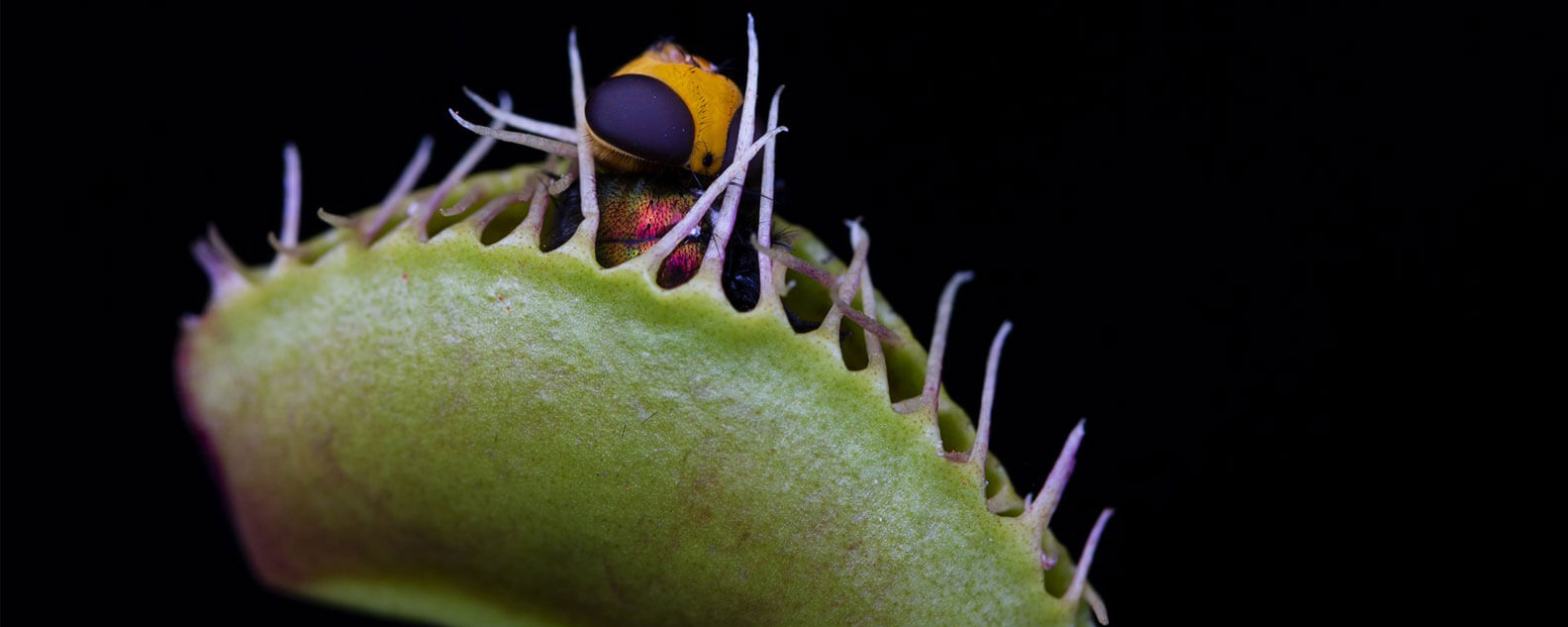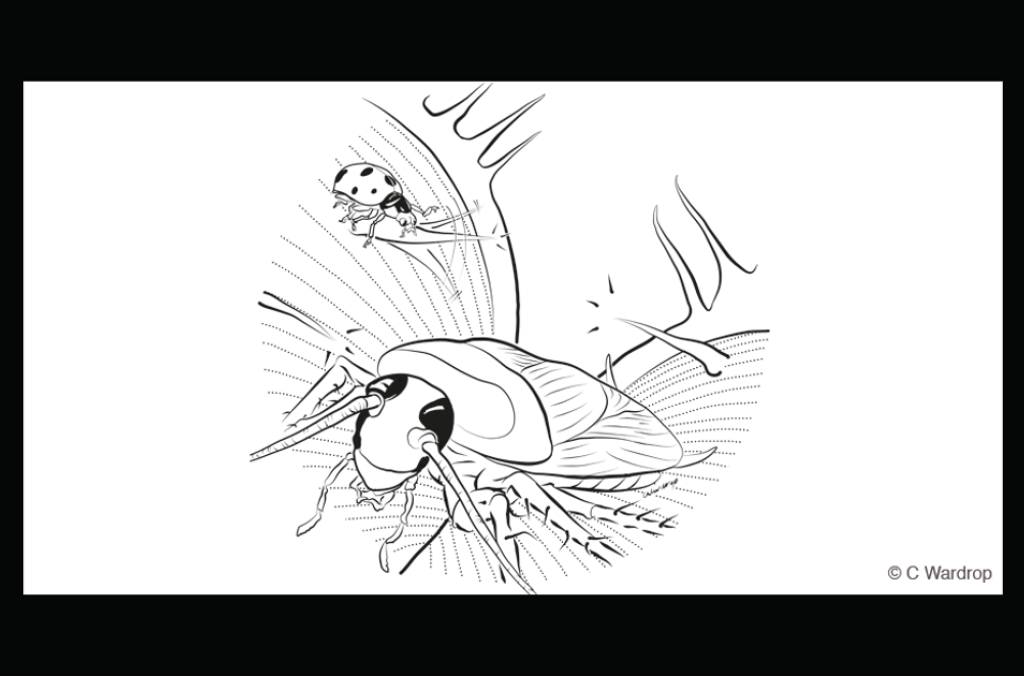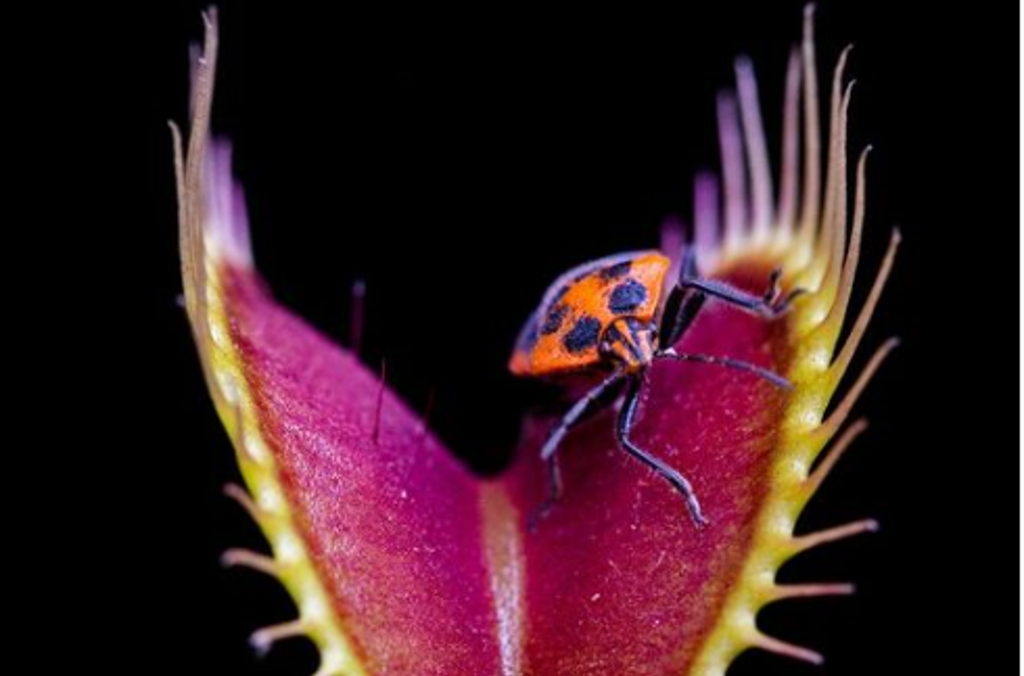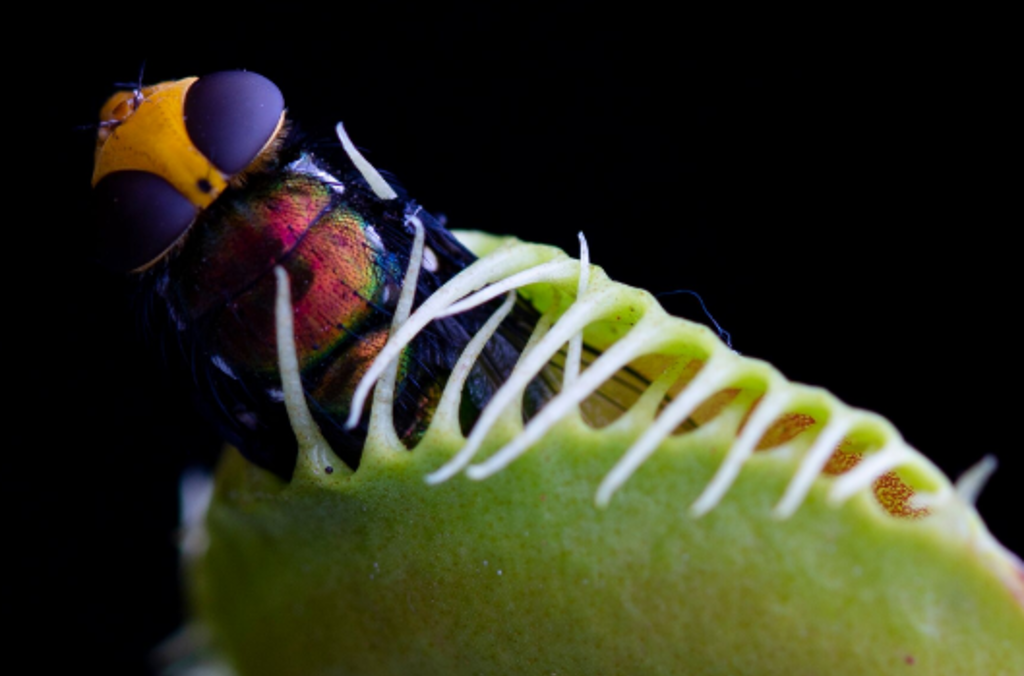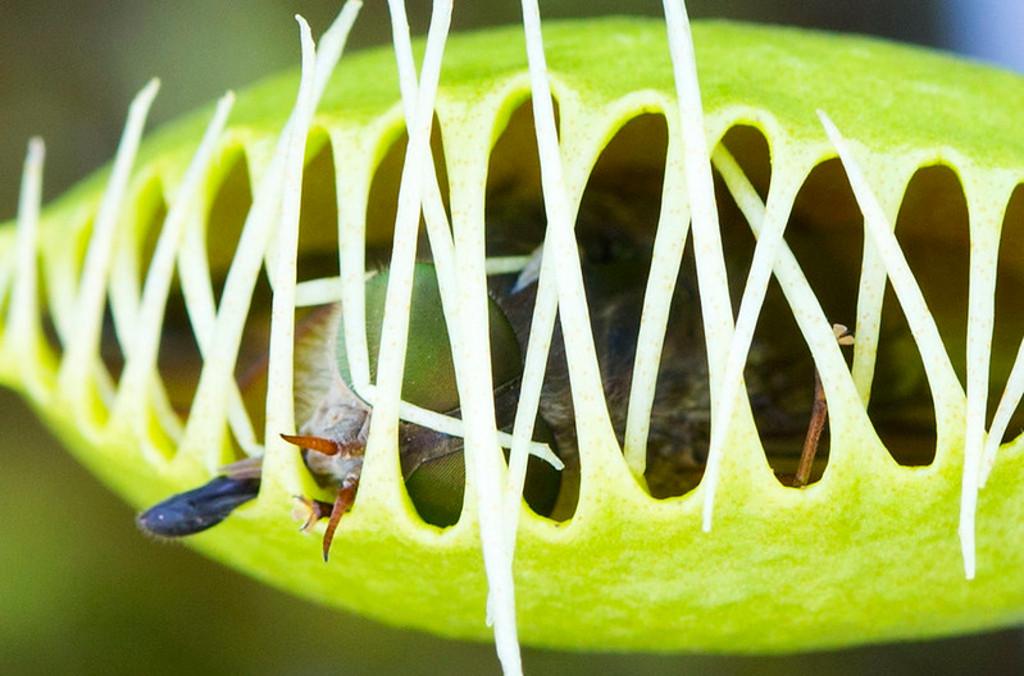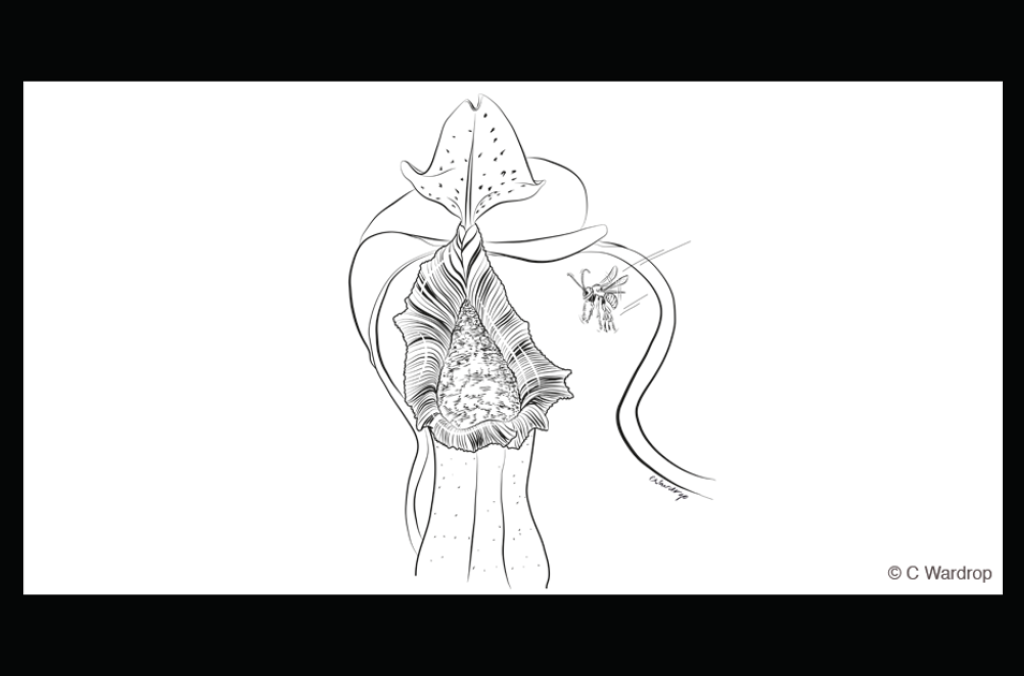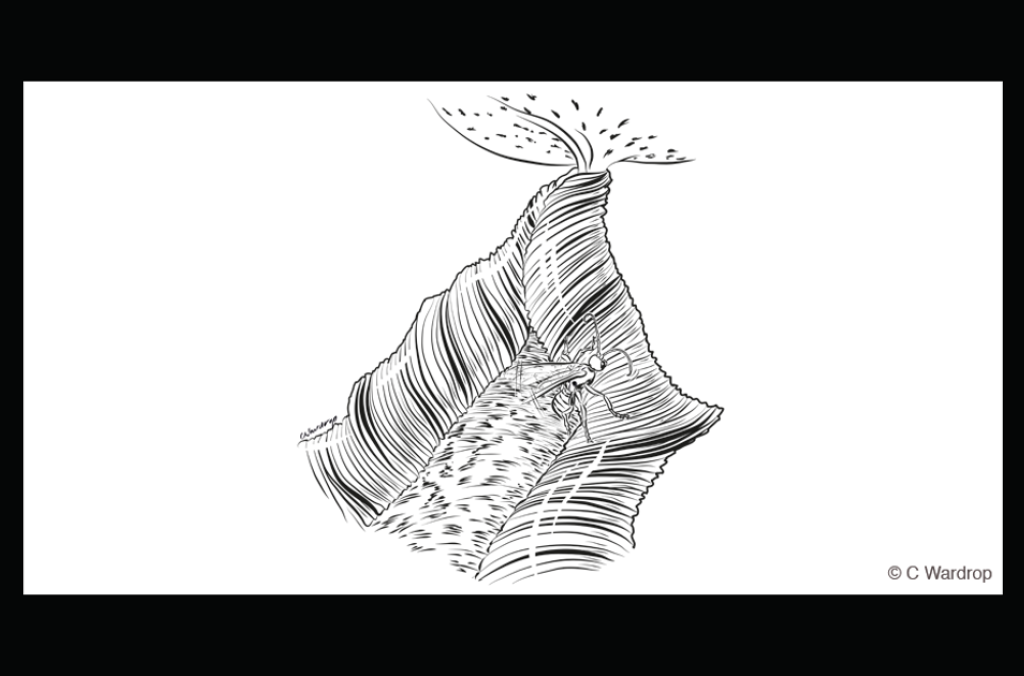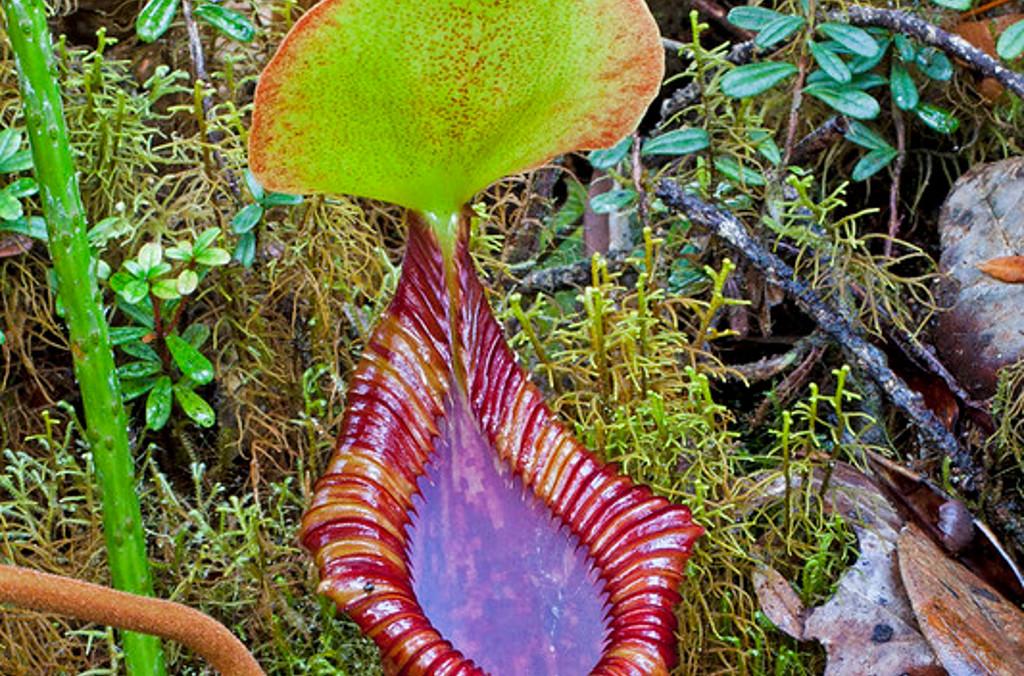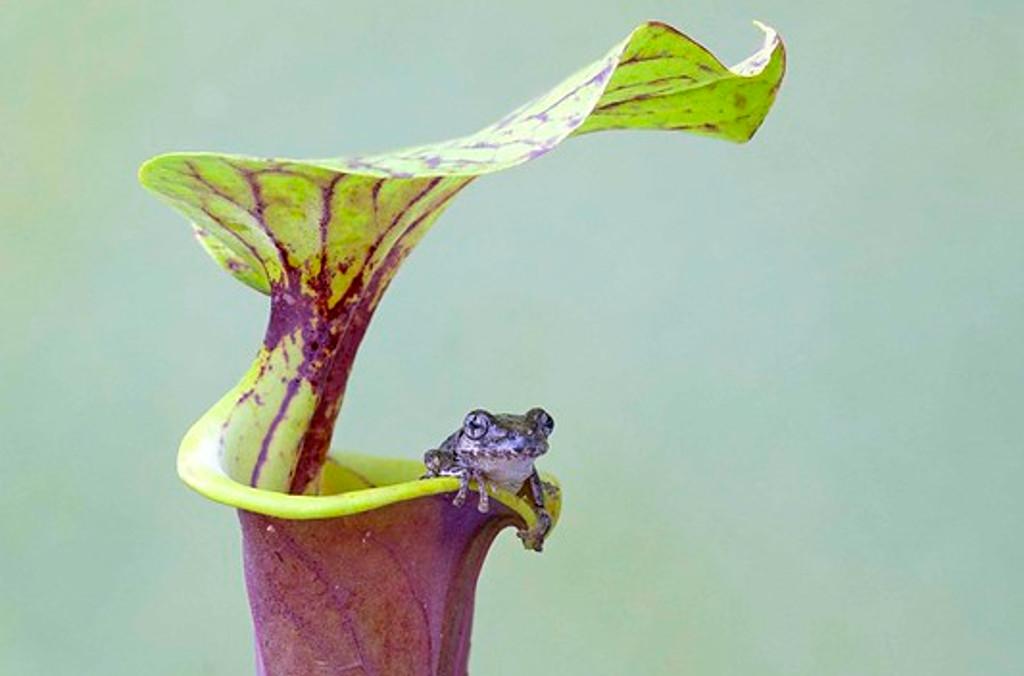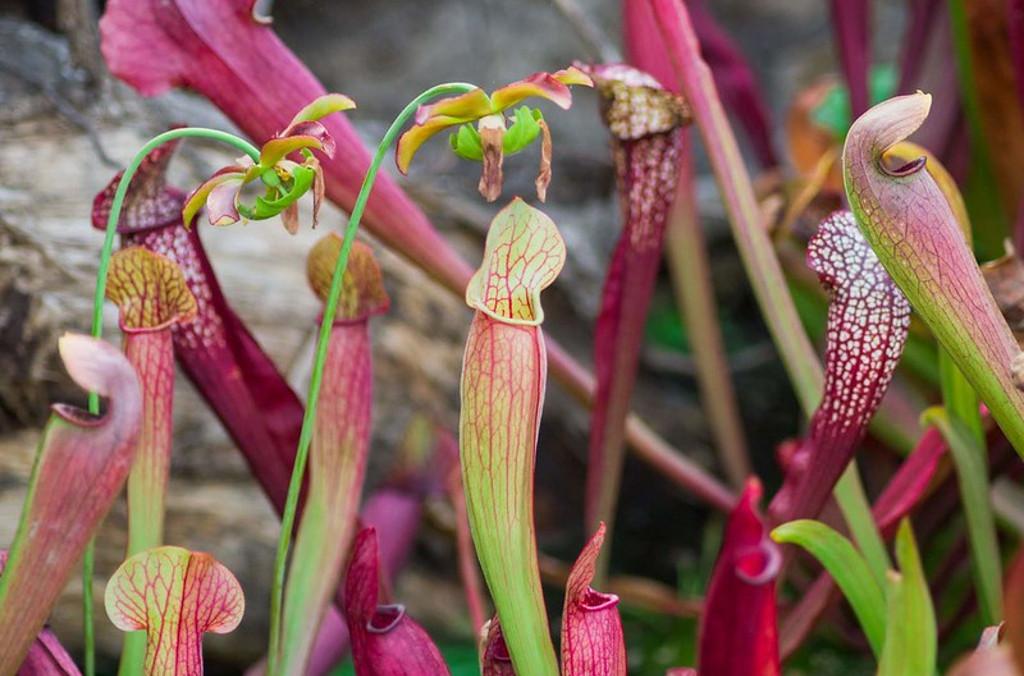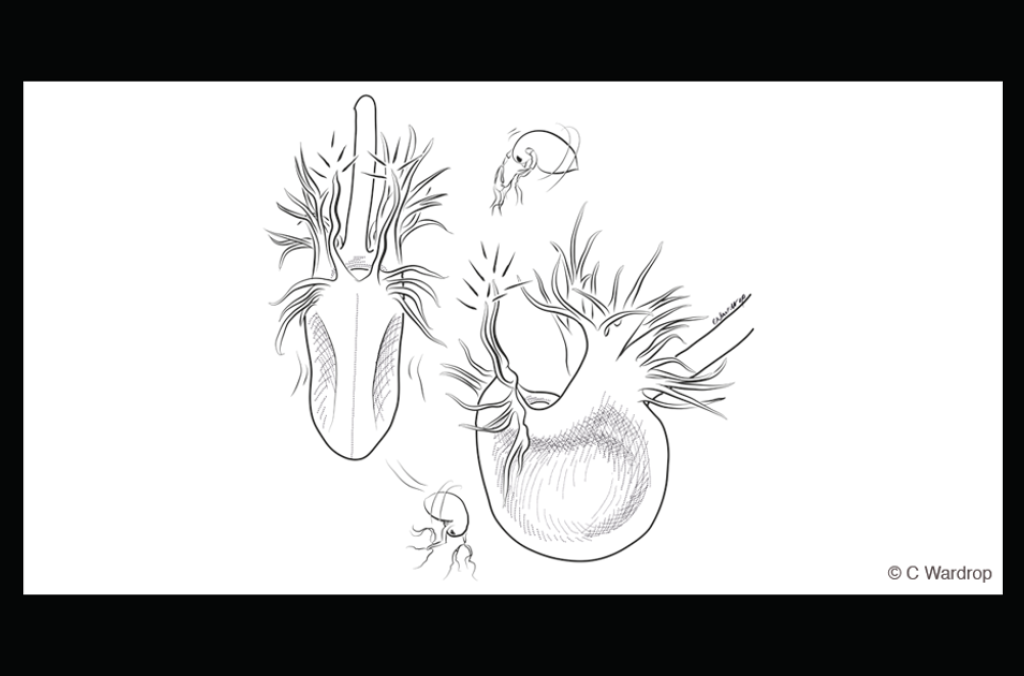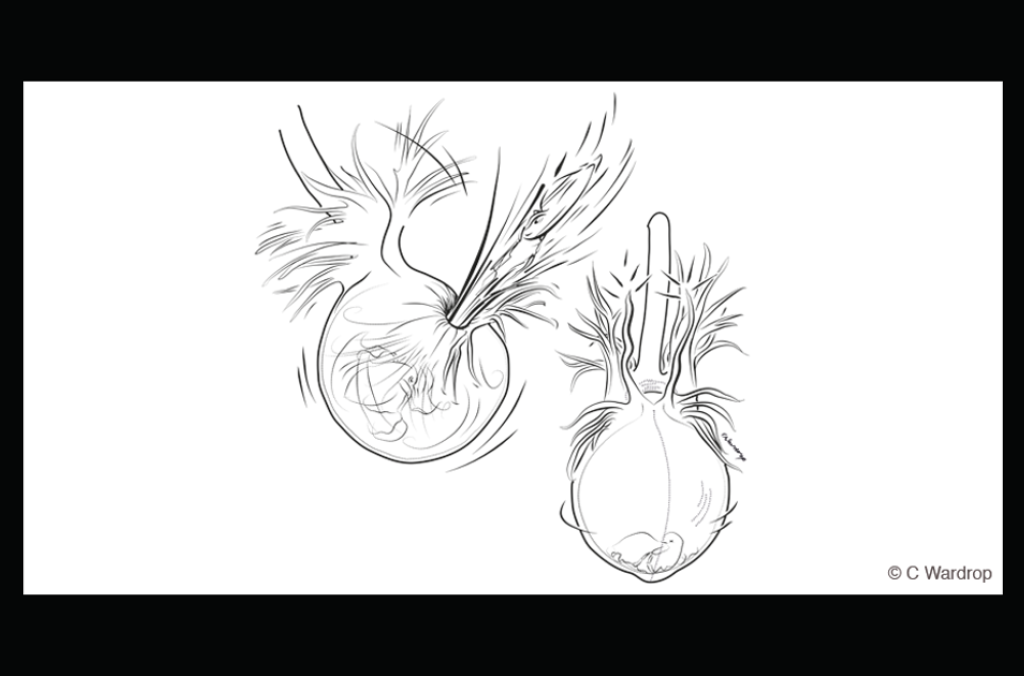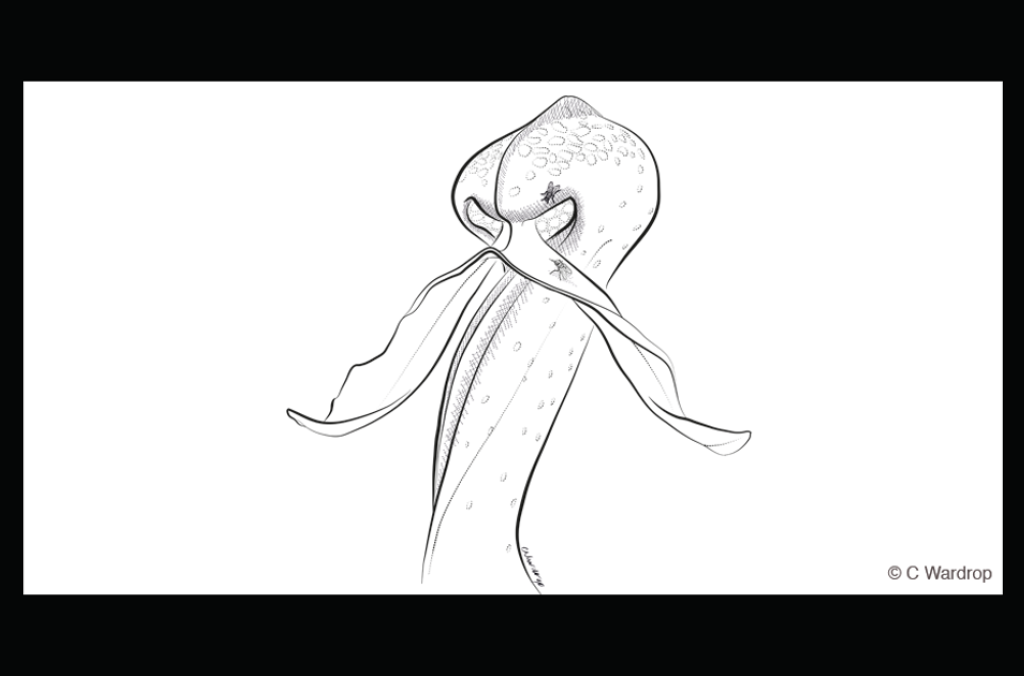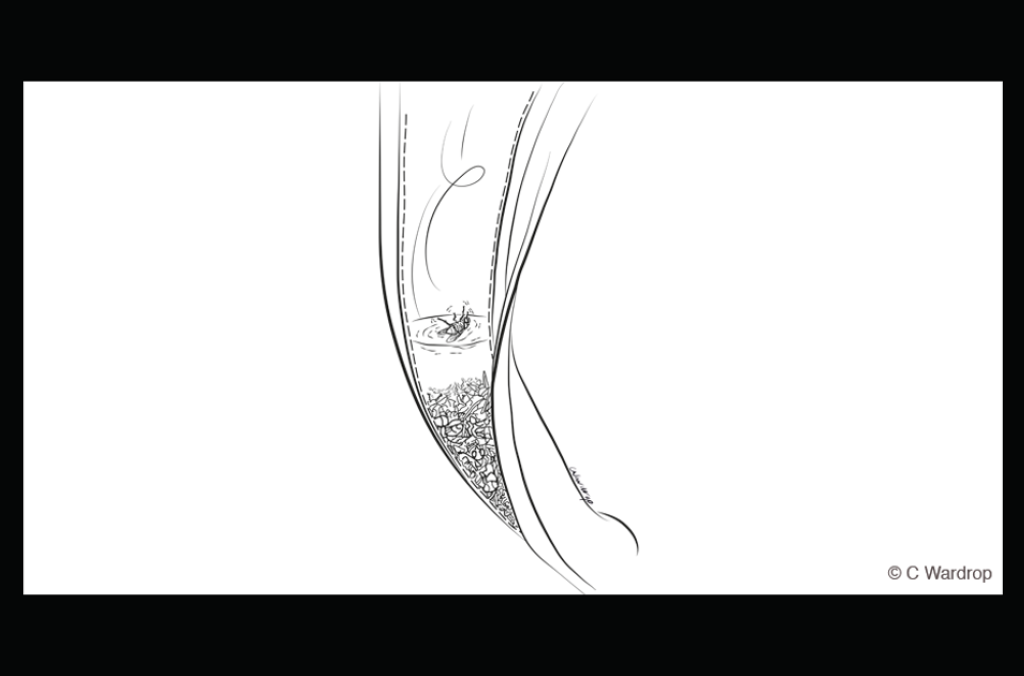Snap traps
Snap traps use electricity and hydraulics to prepare and launch their attack.
The snap trap is the most well-known trapping mechanism of carnivorous plants. Ingeniously, snap traps use electricity and hydraulics to prepare and launch their attack. Inside the plant, electric pulses track and remember prey movements. With perfect timing, a quick shift of water (hydraulics) within the trap walls causes them to bend and snap!
Plants with bite – snap traps
Watch this video: Plants with bite – snap traps
Activities: Snap traps
1. Identifying structural adaptations
Identify and list the structural adaptations of the Venus fly trap that enable it to entice and trap prey.
2. Observing
Observe the structural adaptations of the plant.
Draw and label a scientific diagram of its snap trap.
Label the functions and mechanics of its features.
3. Re-enact
Use puppets and props, such as gloved hands, to create an enactment or video that describes the plant’s adaptations and explains the trapping steps and mechanisms.
4. Caring for a Venus Fly Trap
Keep a Venus fly-trap in the classroom. Refer to how to care for a Venus fly trap.
Pitfall traps
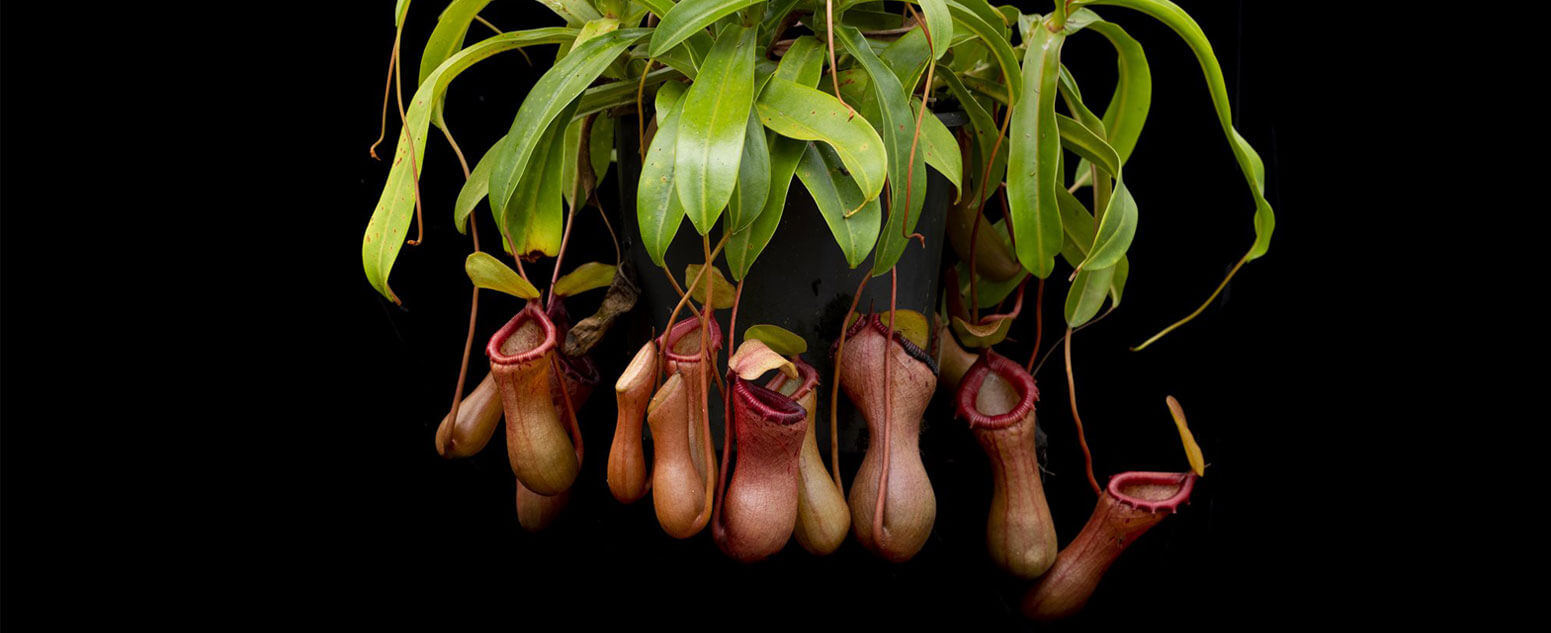
Green and brown pitcher plant. ©G Bourke
Cunning pitfall-traps are perfectly evolved to defeat their light-footed insect prey.
The trap’s lip is glassy-smooth, and a microscopic stairway slopes downward. Stumbling inside, the prey’s feet become clogged by tiny wax crystals that break off the walls ... and they fall.
Plants with bite – Lobster Pots
Activities: Pitfall traps
1. Observing
Observe the structural adaptations of the plant.
Draw and label a scientific diagram of its pitfall trap.
Label its features and outline the function of each.
2. Construction
Construct a 3D model of the plant, replicating the plant’s structural adaptations such as colours and surfaces.
Use a model of an invertebrate to demonstrate the plant’s trapping mechanisms.
3. Make a pitfall trap
Pitfall traps are used by scientists to catch and study crawling ground-dwelling invertebrates.
Use the structural features of the pitcher plant’s trap to construct a pitfall trap to collect invertebrates.
Insert it into a garden bed at ground level and leave it overnight. Next day, extract the trapped invertebrates.
Use magnifiers to examine their features and infer their structural adaptations.
Sticky traps
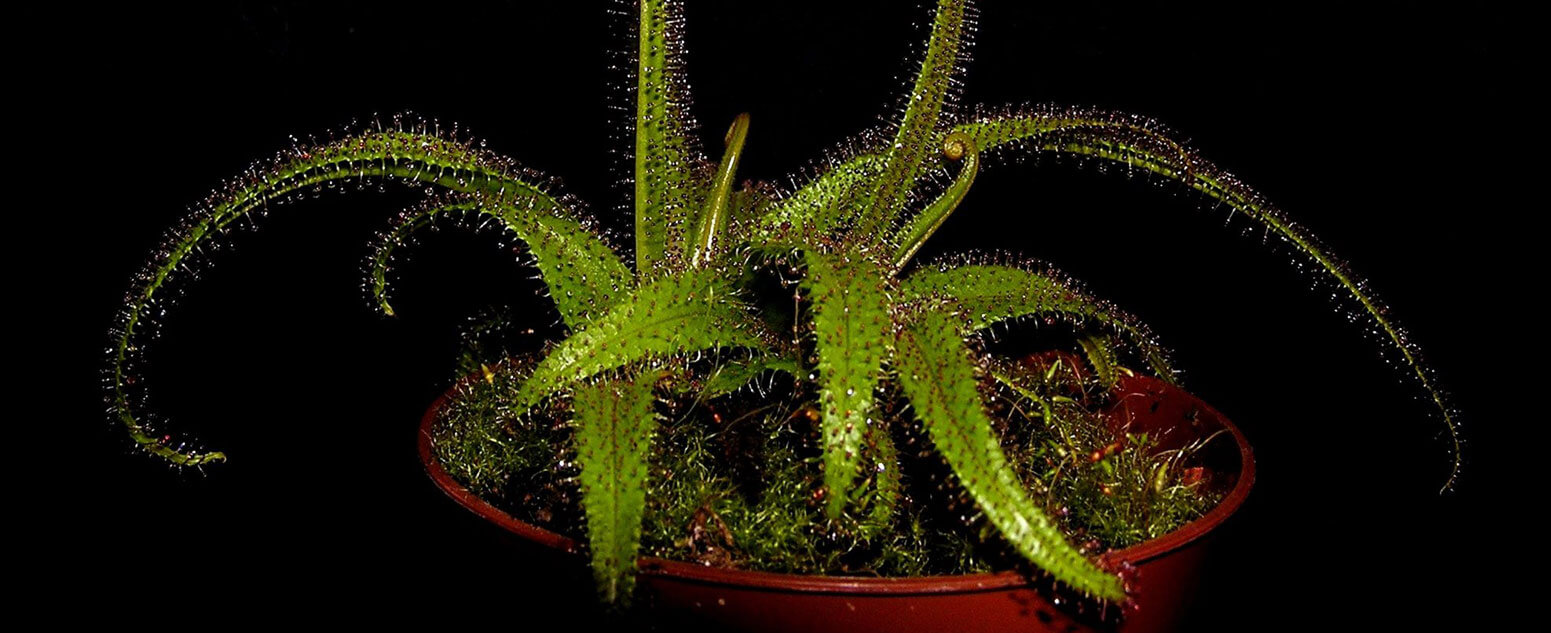
Sticky trap - Drosera_regia
Sparkling in the sunlight, sticky traps hide their deadly weapons in full sight. Their murderously sticky mucilage, sticks, spreads and binds their prey so tightly there is no escape.
Sticky Leaf Traps
Activities: Sticky traps
1. Observing
Observe the structural adaptations of the Sundew plant.
Draw a scientific diagram of its sticky trap, label its features and describe its structural adaptations for trapping invertebrates.
Create an animation to demonstrate how Sundew plants trap animals.
2. Animating
Create an animation to demonstrate how Sundew plants trap animals.
3. Inventing
Invent a physical game along the lines of ‘stuck in the mud’ or ‘bull rush’ that demonstrates the structural adaptations of plants with sticky traps.
4. Designing
Sticky fly paper uses the principles of sticky traps and can be used as an environmentally friendly pest control method.
Make your own non-toxic sticky fly paper. Use design and production skills to experiment with different recipes for the sticky surface and use working scientifically skills to conduct a fair test to determine the most effective.
Suction traps

Close up of a bladderwort with a trapped mosquito larvae
With speed and strength, suction traps unleash forces of astounding power.
Bladderworts are Earth’s fastest-moving predatory plants, and their suction traps unleash forces of astounding power.
Prey rarely escapes a split-second precision attack. As they are sucked into the trap, victims are subjected to pressures up to 600 g0 — exposure to this gravitational force would kill a human.
Helping humanity
Although tiny, bladderworts have a huge appetite that is helping humanity. They devour the eggs and larvae of disease-carrying mosquitoes and the larvae of human parasites including blood flukes.
How a Bladderwort traps its prey
Underwater peril: Along slender stems, small pods pump water out through their walls. This creates a vacuum inside: Each pod is spring-loaded and ready for action!
On the alert: Pods wait on a hair trigger. Long antennae sway gently in the water … detecting vibrations from prey swimming nearby they instantly activate the trap.
High-speed strike: In under a millisecond a trapdoor opens, the prey is sucked in, and SNAP! — the door shuts. The stunned victim dies of anoxia and is digested.
Prey and habitat
Bladderwort prey includes insect larvae, worms, fish hatchlings, crustaceans and zooplankton.
They are found in waterlogged soil, fresh-water lagoons and streams in Australia, Asia and the Americas. Some grow high in trees – in wet moss, on bark, or in the water tanks of bromeliads.
Activities: Suction traps
1. Getting creative
Use plastic squeeze bottles, such as sauce bottles, to replicate the suctioning action of a bladderwort trap.
Use it in a tub of water to suck up small items such as grains of rice.
2. Scientific drawing
Use the photograph to draw a diagram of the features of a Bladderwort.
Include a mosquito larva in a suction pod.
Use labels and annotations to describe the suction trap function of Bladderworts.
Light traps
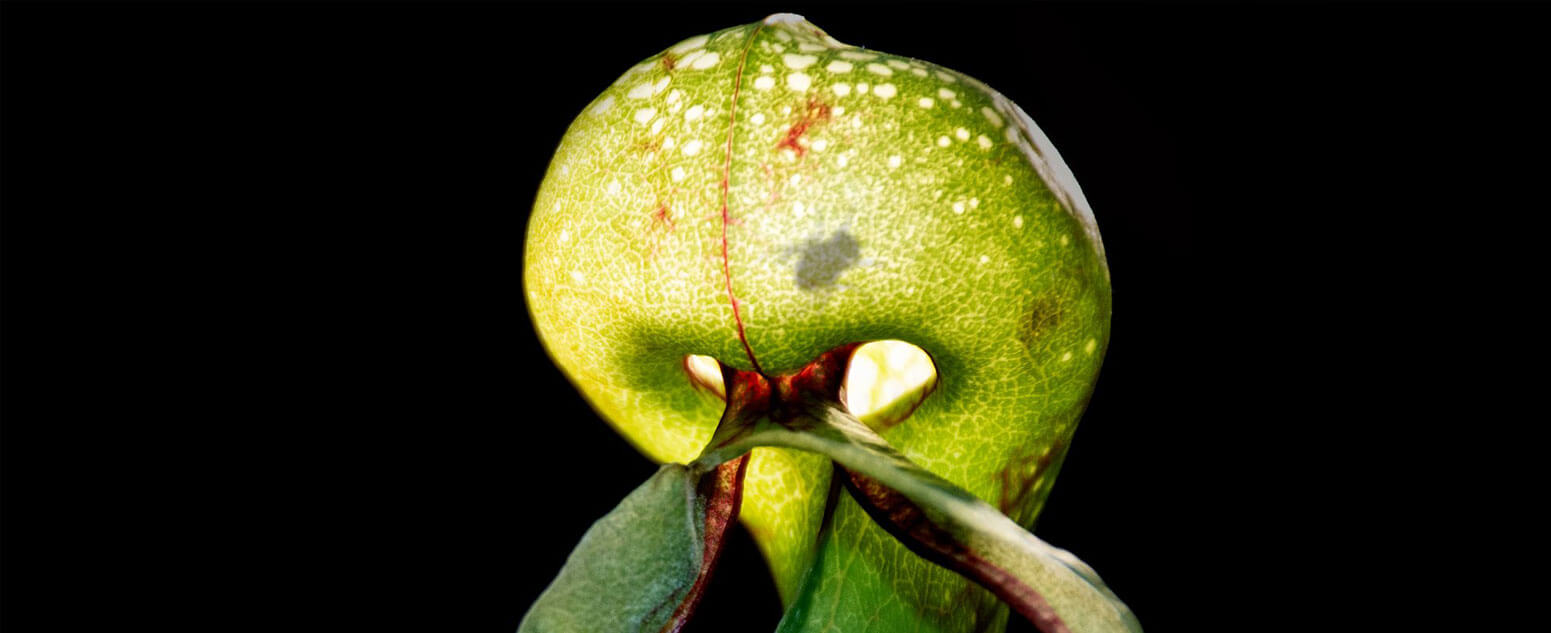
Green menacing looking cobra lilly with light trap adaptation
Once past the welcoming entrance of the trap, windows of light offer the promise of escape.
These con artists use architectural fraud to play mind games with their prey. Once past the welcoming entrance of the trap, windows of light offer the promise of escape. The real exit is often hidden by a dark, curved wall. The victim is persuaded deeper into the trap and embarks on a one-way journey.
Parrot pitcher plant – amphibian hunter
The Parrot Pitcher-plant (Sarracenia psittacina) hunts crawling insects. Its pitchers lie on the ground, and when its boggy habitat is flooded, they become submerged.
Equally deadly underwater, the traps attract tadpoles that, once inside, can’t find the dark exit. Myriad sharp, spikey hairs point towards the trap’s end, and the tadpoles are forced to their doom.
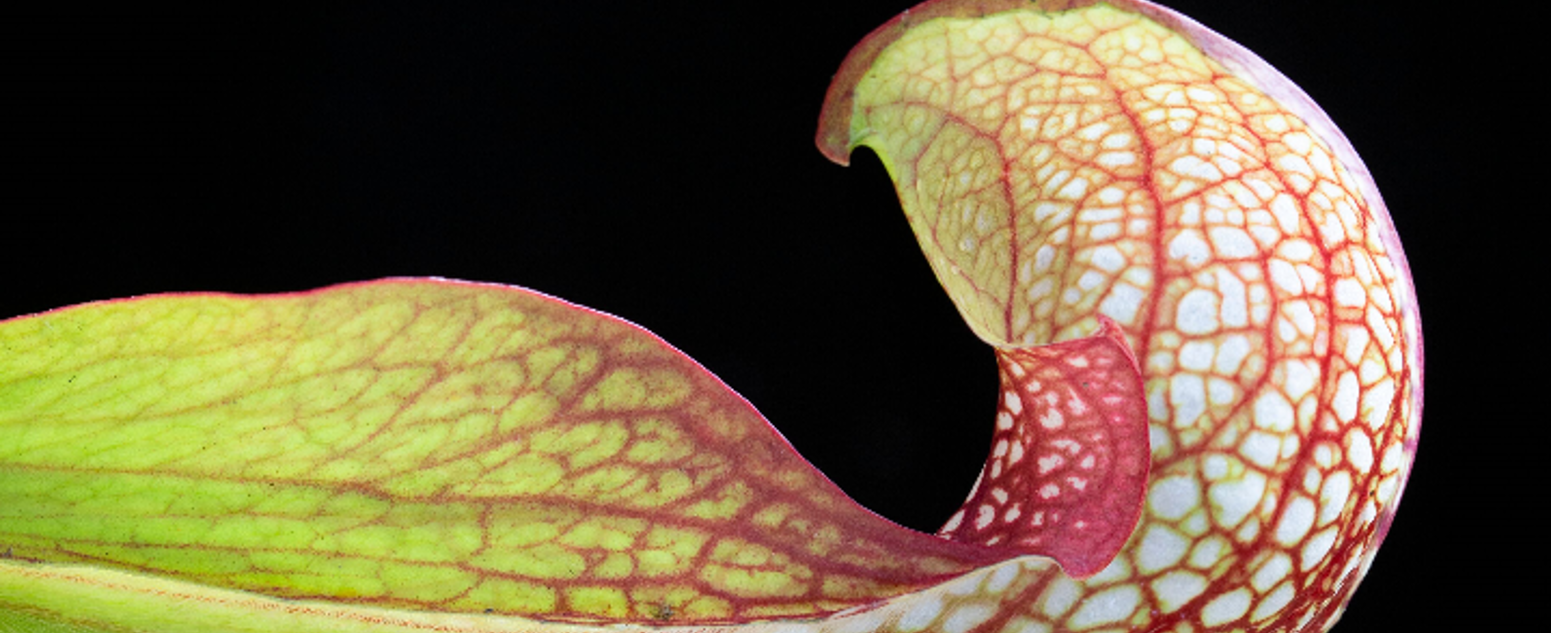
Parrot Pitcher-plant trap section showing hairs inside.
Activities: Light traps
1. Recounting a story
Use the sequence of diagrams of the cobra lily to recount the sequence of trapping a fly.
Write or tell in first-person from the fly’s point of view and also from the cobra lily’s point of view.
Add speech bubbles to the sequence of drawings or use puppets or role play.
2. Illustrating
- Draw a set of cartoon-style illustrations that illustrate how the Parrot Pitcher-plant attracts and traps tadpoles.
Image credits
Drawings: ©C Wardrop
Images: Unless otherwise indicated ©G Bourke
Want to know more?
Listen to the Branch Out Plants With Bite podcast
